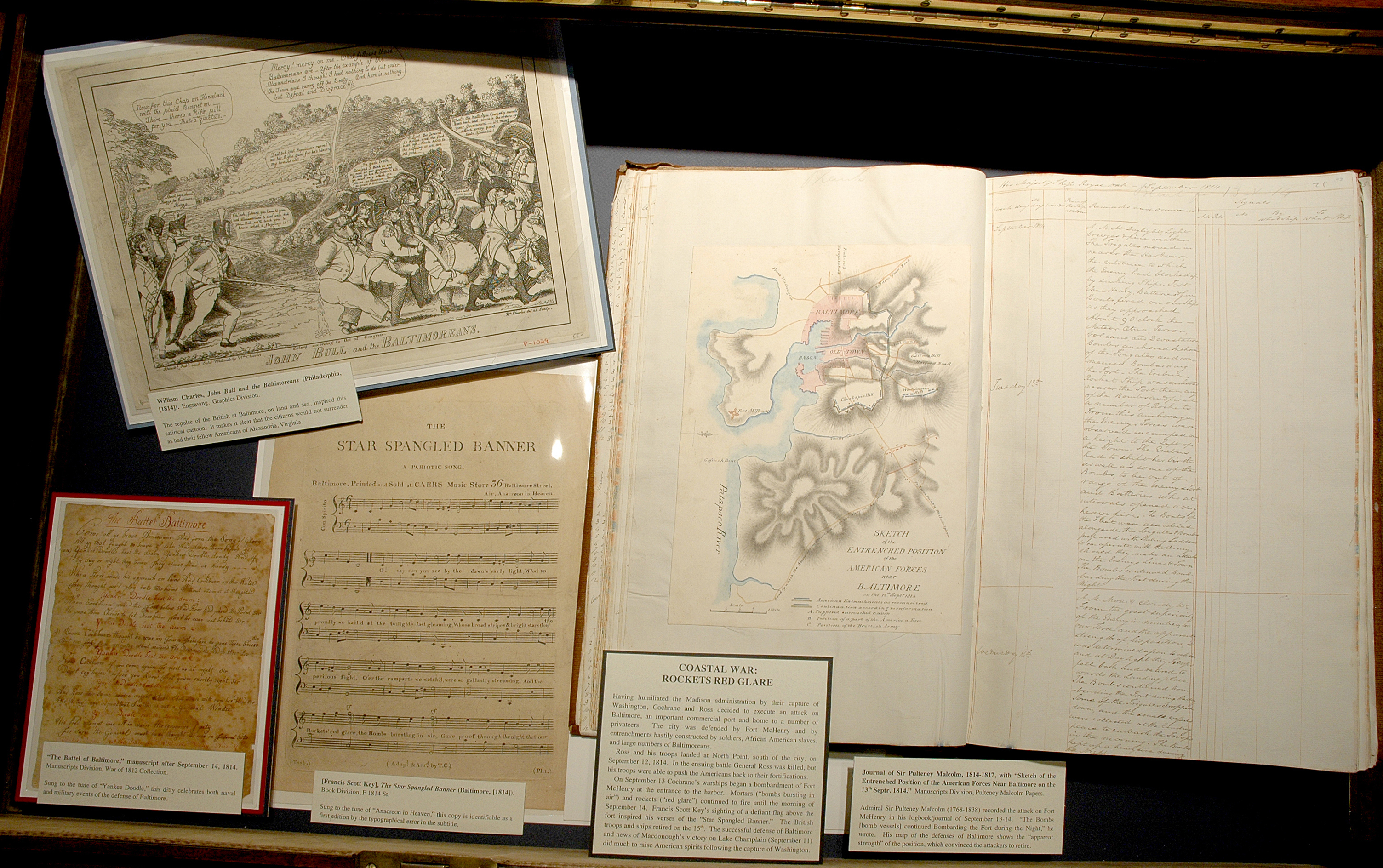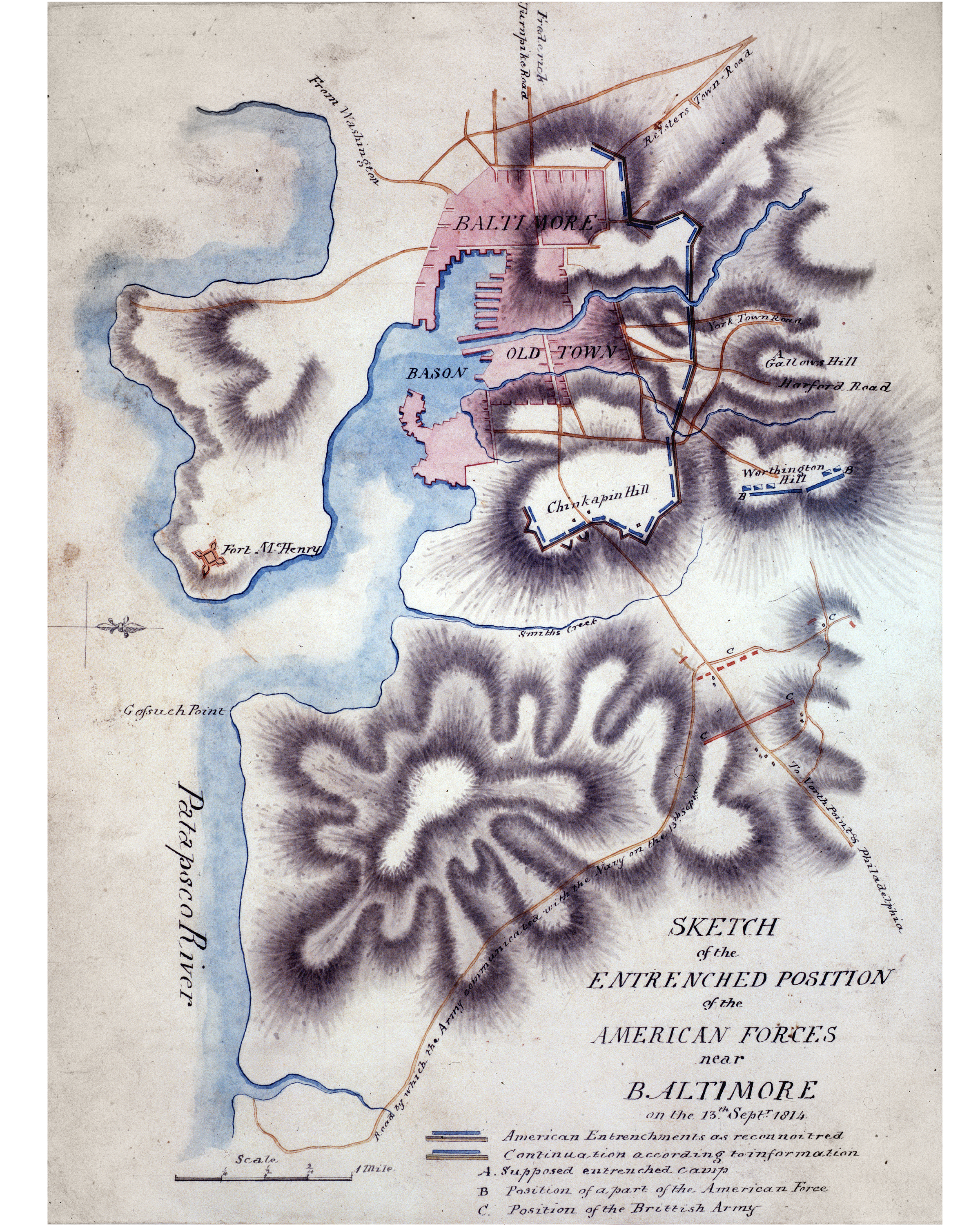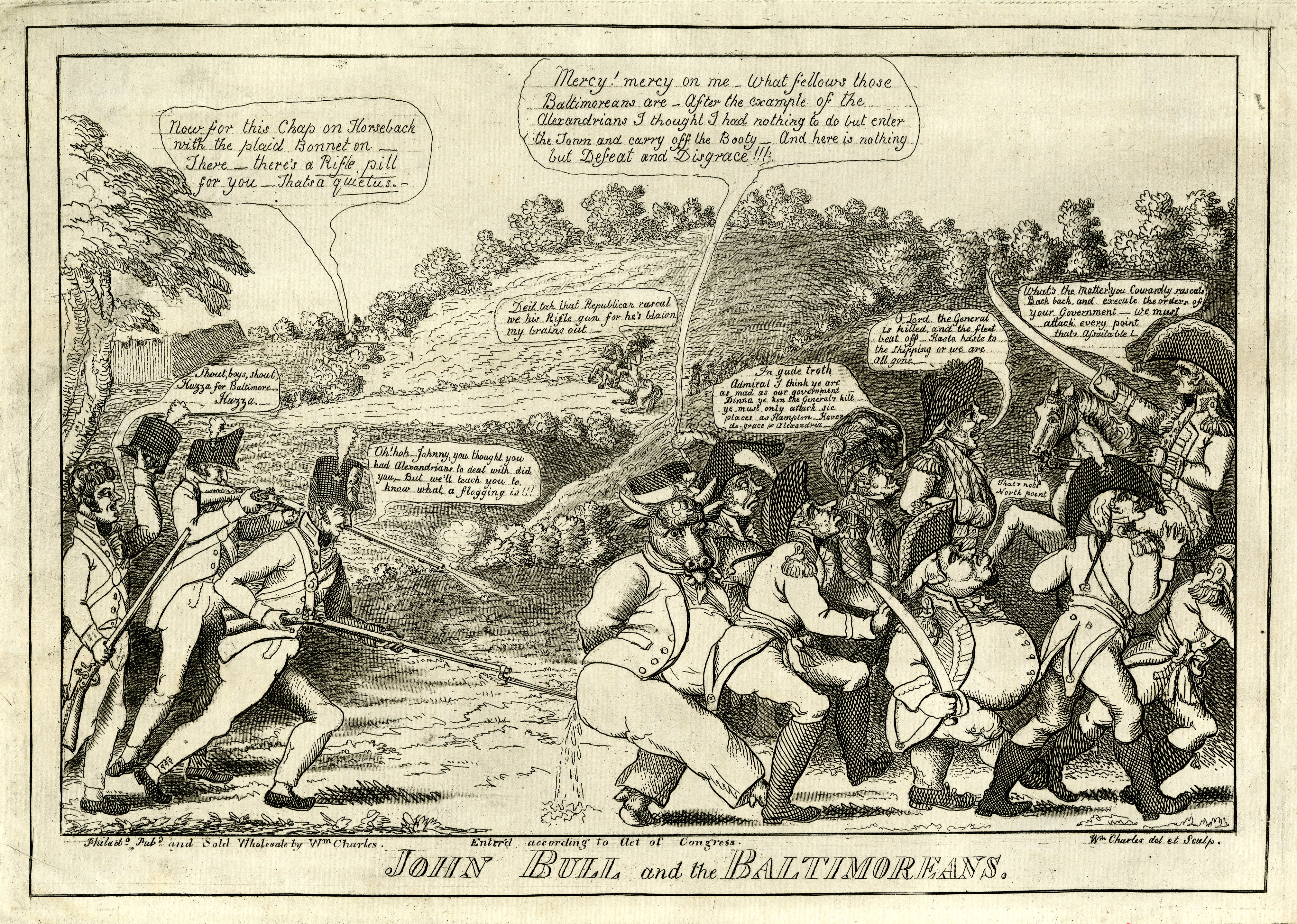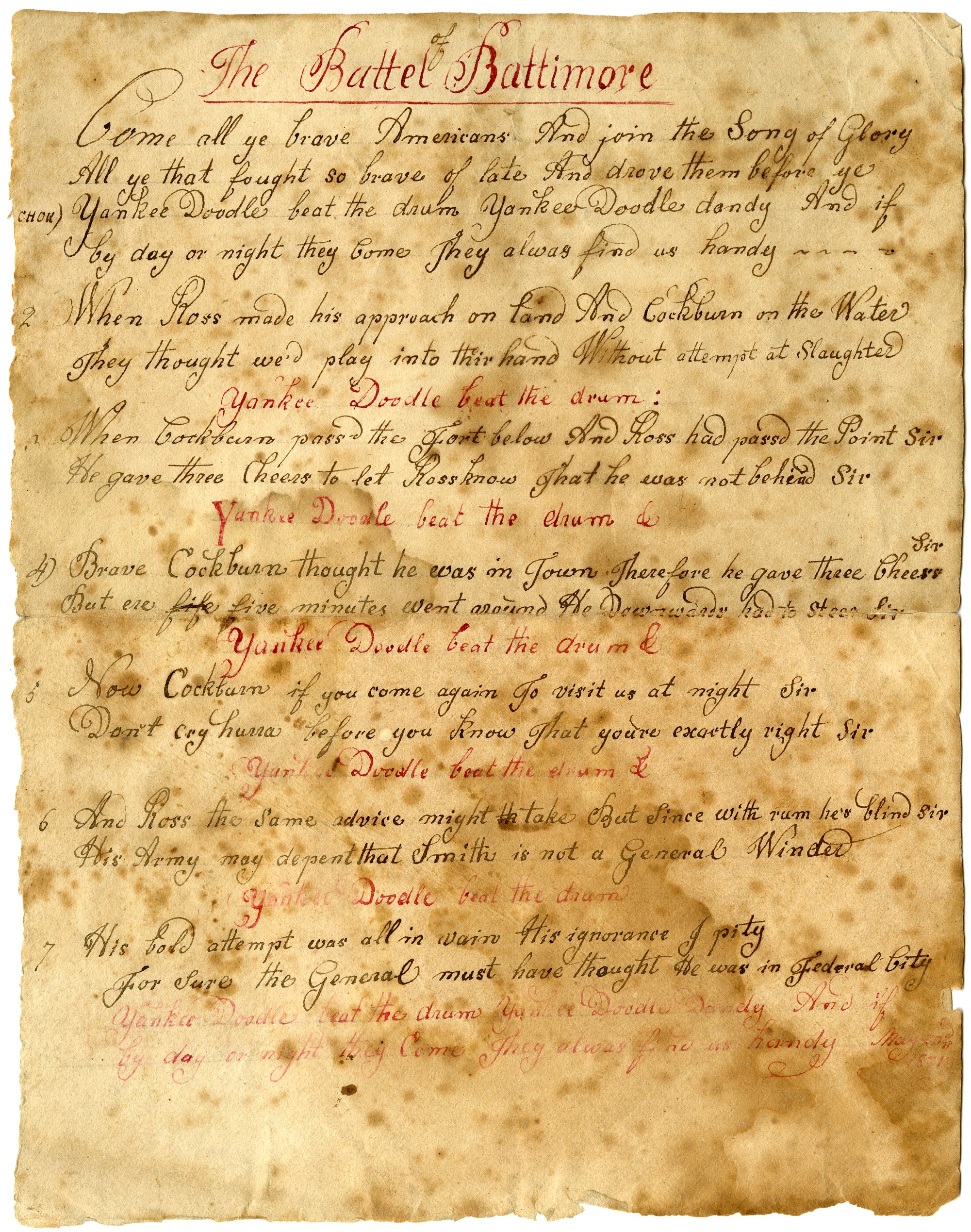The War of 1812: A Bicentennial Exhibition, Case 14
Case 14: Coastal War: Rockets Red Glare
Having humiliated the Madison administration by their capture of Washington, Cochrane and Ross decided to execute an attack on Baltimore, an important commercial port and home to a number of privateers. The city was defended by Fort McHenry and by entrenchments hastily constructed by soldiers, African American slaves, and large numbers of Baltimoreans.
Ross and his troops landed at North Point, south of the city, on September 12, 1814. In the ensuing battle General Ross was killed, but his troops were able to push the Americans back to their fortifications.
On September 13 Cochrane’s warships began a bombardment of Fort McHenry at the entrance to the harbor. Mortars (“bombs bursting in air”) and rockets (“red glare”) continued to fire until the morning of September 14. Francis Scott Key’s sighting of a defiant flag above the fort inspired his verses of the “Star Spangled Banner.” The British troops and ships retired on the 15th. The successful defense of Baltimore and news of Macdonough’s victory on Lake Champlain (September 11) did much to raise American spirits following the capture of Washington.
Journal of Sir Pulteney Malcolm, 1814-1817, with “Sketch of the Entrenched Position of the American Forces Near Baltimore on the 13th Septr. 1814.” Manuscripts Division, Pulteney Malcolm Papers.
Admiral Sir Pulteney Malcolm (1768-1838) recorded the attack on Fort McHenry in his logbook/journal of September 13-14. “The Bombs [bomb vessels] continued Bombarding the Fort during the Night,” he wrote. His map of the defenses of Baltimore shows the “apparent strength” of the position, which convinced the attackers to retire.
[Francis Scott Key], The Star Spangled Banner (Baltimore, [1814]). Book Division, F 1814 St.
Sung to the tune of “Anacreon in Heaven,” this copy is identifiable as a first edition by the typographical error in the subtitle.
William Charles, John Bull and the Baltimoreans (Philadelphia, [1814]). Engraving. Graphics Division.
The repulse of the British at Baltimore, on land and sea, inspired this satirical cartoon. It makes it clear that the citizens would not surrender as had their fellow Americans of Alexandria, Virginia.







